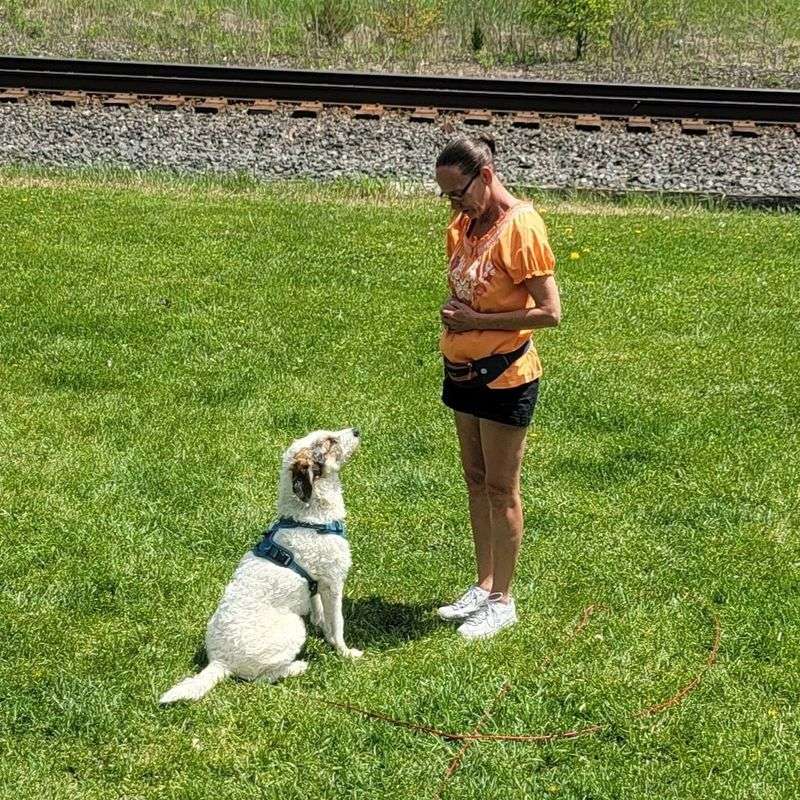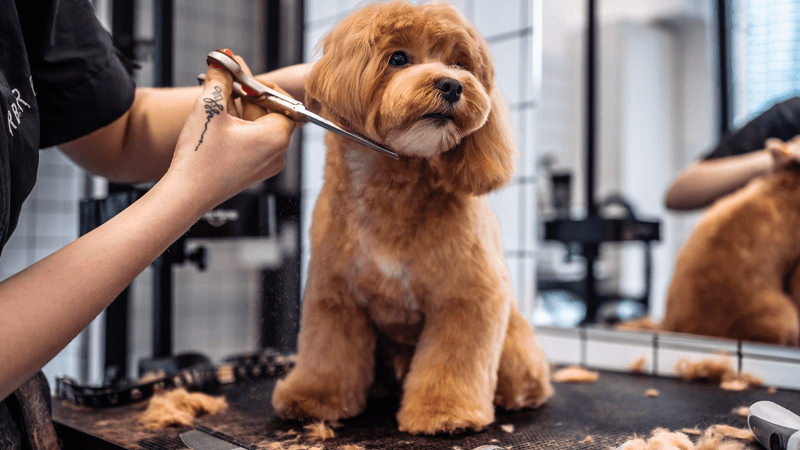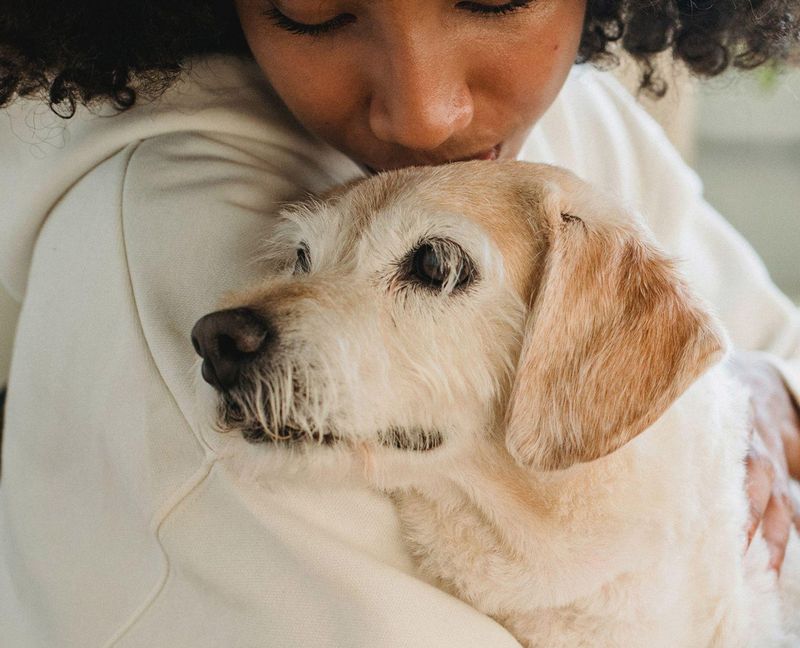Getting a pet isn’t just for the young—it’s for the young at heart! If you’re a baby boomer ready to welcome a furry (or feathered) friend into your life, get ready for an adventure filled with love, companionship, and a little bit of chaos.
Whether you’re looking for a loyal dog, an independent cat, or something a little more exotic, choosing the right pet is only the beginning. There are a few things to consider—like energy levels, vet care, and who’s really in charge (hint: it’s not you).
But don’t worry, you’re not alone on this journey! With a little preparation and the right mindset, having a pet can bring immeasurable joy and purpose to your days.
From choosing the perfect companion to making life easier for both of you, these 19 must-know tips will set you up for a successful and happy pet-parenting experience!
Choosing the Right Pet

Selecting the perfect pet is the first step in your pet journey. Consider your lifestyle, physical abilities, and living space. Choose an animal that matches your energy level. For example, active individuals might enjoy dogs, while those seeking a calmer companion may prefer a cat or bird. Research various breeds and their care requirements. Discuss any health issues or allergies with your doctor. Remember, a pet is a long-term commitment, so choose wisely. Visit shelters, talk to owners, and spend time with different animals to find your perfect match. This thoughtful approach ensures a happy relationship.
Creating a Pet-Friendly Home

Creating a safe and welcoming environment is essential for your new pet’s well-being. Baby boomers should consider rearranging their home to accommodate their pet’s needs. Install gates to limit access to unsafe areas. Remove hazardous items like small objects and toxic plants. Ensure food and water are easily accessible. Providing a comfortable bed in a quiet spot helps pets feel secure. Invest in pet-friendly furniture that is easy to clean. Stock up on toys to keep them entertained. A well-prepared home not only ensures safety but also enhances your pet’s quality of life.
Establishing a Routine

Pets thrive on routine and structure, much like humans. Baby boomers can benefit from establishing a daily schedule for feeding, walks, playtime, and rest. Consistent mealtime helps regulate digestion, while regular walks provide necessary exercise and mental stimulation. Designate specific times for training sessions to reinforce positive behavior. A predictable routine reduces anxiety for both you and your pet. It helps build trust and strengthens the bond between you. Adjust your routine gradually to accommodate seasonal changes or health issues. This consistency leads to a harmonious and balanced life together with your pet.
Understanding Pet Nutrition

Proper nutrition is vital for your pet’s health and longevity. Baby boomers should research the nutritional requirements specific to their pet’s breed, age, and health condition. Consult with a veterinarian to choose the right diet, whether it be commercial food, home-cooked meals, or a combination. Monitor your pet’s weight and adjust portions accordingly to prevent obesity. Be mindful of food allergies and intolerances, opting for hypoallergenic options if needed. Introduce new foods gradually to avoid digestive upset. Providing balanced nutrition not only contributes to your pet’s well-being but also enhances their quality of life.
Finding the Right Veterinarian

Selecting a trustworthy veterinarian is crucial for your pet’s health care. Baby boomers should seek recommendations from friends, family, or pet owners in their community. Visit potential clinics to assess their facilities and meet the staff. Choose a veterinarian who communicates clearly and listens to your concerns. Regular check-ups, vaccinations, and preventive care are essential for maintaining your pet’s health. Establishing a good relationship with your vet ensures you feel comfortable discussing any issues. A reliable veterinarian is a valuable partner, helping you navigate your pet’s health journey with confidence and peace of mind.
Pet Training Basics

Training is an essential aspect of pet ownership. Baby boomers should learn basic obedience commands such as sit, stay, and come. Use positive reinforcement techniques, rewarding good behavior with treats and praise. Consistent training sessions build trust and respect between you and your pet. Address behavioral issues promptly to prevent them from becoming ingrained habits. Enroll in training classes if needed for professional guidance. Socialize your pet with other animals and people to foster confidence and reduce fear. Patience and persistence are key to successful training, resulting in a well-behaved and happy companion.
Grooming and Hygiene

Maintaining your pet’s grooming and hygiene is vital for their health and comfort. Baby boomers should establish a regular grooming routine, including brushing, bathing, and nail trimming. Use appropriate tools and products for your pet’s specific needs. Regular grooming helps detect skin issues, parasites, and injuries early. Clean your pet’s ears and teeth to prevent infections and dental problems. Create a calm environment to make grooming sessions pleasant for both you and your pet. Grooming is not only a bonding experience but also a preventive measure that enhances your pet’s overall well-being.
Pet Insurance Benefits

Considering pet insurance can provide peace of mind to baby boomers. Unexpected veterinary expenses can strain finances, but insurance helps offset costs. Research various plans, comparing coverage, deductibles, and premiums. Choose a plan that suits your pet’s age, breed, and health condition. Some policies cover routine care, while others focus on major medical expenses. Read the fine print to understand exclusions and limits. Investing in pet insurance ensures your pet receives the necessary care without financial worry. It allows you to focus on your pet’s well-being, knowing you’re prepared for any eventuality.
Socializing Your Pet

Socialization is key to a well-adjusted pet. Baby boomers should introduce their pets to different environments, people, and other animals. Frequent visits to parks, pet-friendly cafes, and social gatherings help build confidence and reduce anxiety. Encourage positive interactions and supervise encounters to ensure safety. Gradually expose your pet to new experiences, rewarding calm behavior with treats and praise. Socialization prevents behavioral issues and enhances your pet’s adaptability. It’s an opportunity to bond with your pet and enjoy shared experiences. A well-socialized pet is happier, more confident, and a joy to have around.
Understanding Pet Communication

Understanding your pet’s communication cues fosters a deeper bond. Baby boomers should pay attention to body language, vocalizations, and behavior changes. Recognize signs of stress, fear, or contentment. Learn what different barks, meows, or chirps indicate. Use your observations to respond appropriately, offering comfort or space as needed. Engage in activities that promote communication, like interactive play and training. Building this mutual understanding enhances trust and reduces misunderstandings. It strengthens your relationship, making your pet feel valued and secure. Effective communication is the foundation of a harmonious and fulfilling pet journey.
Pet Safety Measures

Ensuring your pet’s safety is a top priority. Baby boomers should implement safety measures to protect their pets from danger. Secure hazardous areas like kitchens and garages with gates or locks. Store toxic substances out of reach. Use pet-friendly cleaning products to avoid harmful chemicals. Install screens on windows to prevent falls. Keep small objects and electrical cords away from curious pets. Microchip your pet and use a collar with identification tags for quick recovery if they become lost. These precautions create a safe environment, allowing your pet to explore and enjoy their surroundings confidently.
Handling Pet Anxiety

Anxiety is common in pets, and baby boomers should learn to manage it effectively. Identify triggers like loud noises, strangers, or separation. Create a safe, quiet space for your pet to retreat when anxious. Use calming techniques such as gentle strokes, soothing music, or pheromone diffusers. Gradually desensitize your pet to stressors through positive reinforcement. Consult a veterinarian if anxiety persists, as they may recommend behavioral therapy or medication. Understanding and addressing anxiety enhances your pet’s well-being and strengthens your bond. Your pet feels more secure and comfortable in their environment.
Traveling with Pets

Traveling with pets requires careful planning. Baby boomers should prepare by packing essentials like food, water, toys, and a comfortable travel crate. Ensure your pet is accustomed to car rides before embarking on longer journeys. Use safety harnesses or carriers to secure them during travel. Plan breaks for exercise and bathroom needs. Research pet-friendly accommodations and destinations. Keep your pet’s health records handy in case of emergencies. Familiarize them with the travel environment to reduce stress. Thoughtful preparation makes travel enjoyable for both you and your pet, creating memorable experiences together.
Understanding Pet Lifespan

Understanding a pet’s lifespan is crucial for long-term planning. Baby boomers should research the average lifespan of their chosen pet, considering factors like breed and health. Be prepared for the responsibilities that come with each life stage, from playful puppyhood to serene senior years. Anticipate changes in needs, such as diet, exercise, and medical care. Plan for the future, ensuring your pet’s well-being even if your circumstances change. Consider arrangements for your pet’s care in the event of illness or relocation. Recognizing the commitment involved leads to a fulfilling and responsible pet journey.
Engaging Pet Activities

Engaging your pet in activities keeps them happy and healthy. Baby boomers should explore various options based on their pet’s preferences. Active pets enjoy games like fetch, agility, or frisbee, while others may prefer puzzle toys or gentle walks. Rotate activities to maintain interest and challenge your pet’s mind. Incorporate training into playtime for added mental stimulation. Spend quality time bonding through shared activities. Always ensure activities are safe and appropriate for your pet’s age and health. Engaging pursuits enrich your pet’s life, providing joy, exercise, and a deeper connection with you.
Dealing with Pet Loss

Losing a pet is a deeply emotional experience. Baby boomers should allow themselves to grieve and seek support from family, friends, or pet loss groups. Cherish memories through photos, stories, or memorial services. Consider creating a tribute like a scrapbook or garden in honor of your pet. Understand that grief is a personal journey and takes time. Share your feelings with others who understand the bond with a pet. When ready, consider opening your heart to a new companion. Honoring your pet’s memory while moving forward is a testament to the love and joy they brought into your life.
Pet-Friendly Hobbies

Incorporating pets into your hobbies can be rewarding. Baby boomers should explore activities that include their furry friends. Gardening is a great option, allowing pets to explore and play outdoors under supervision. Photography enthusiasts can capture beautiful moments with their pets. Hiking or walking groups provide social interaction and exercise for both. Crafting pet toys or accessories can be a fun project. Choose hobbies that match your pet’s temperament and energy level. These shared experiences enhance your bond and provide enrichment for your pet’s life. Enjoying hobbies together adds joy and fulfillment to your daily routine.
Understanding Pet Legalities

Being informed about pet legalities is essential for responsible ownership. Baby boomers should familiarize themselves with local and state regulations regarding pet ownership. This includes licensing, leash laws, and vaccination requirements. Understand your rights and responsibilities as a pet owner, including liability for any damage your pet might cause. Keep accurate records of your pet’s health and identification. In multi-dwelling units, review lease agreements for pet policies. Complying with legal requirements ensures a harmonious relationship with neighbors and authorities. It protects your pet’s welfare and reflects your commitment to responsible pet ownership.
Pet Adoption Benefits

Adopting a pet comes with numerous benefits. Baby boomers should consider adopting from a shelter, giving a second chance to animals in need. Adoption fees often include vaccinations, microchipping, and spaying/neutering, offering cost savings. Shelters provide valuable insights into the pet’s personality and history. Adopting promotes responsible ownership and reduces pet overpopulation. The sense of fulfillment from rescuing an animal is immeasurable. Sharing your home with a pet brings joy and companionship. Adoption is a rewarding experience, providing both you and your pet with love and happiness. It transforms lives and creates lasting bonds.

